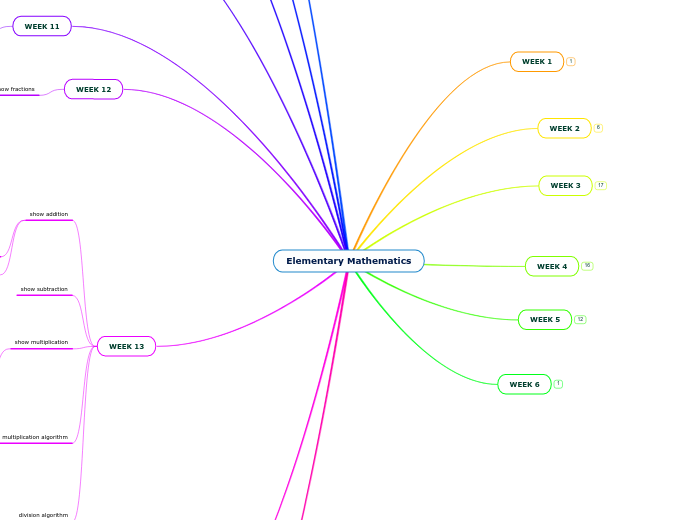
fractions
numerator: number of pieces
denominator: size of pieces
adding fractions
9 3/8 + 2 3/10
9+2= 11
3/8 + 3/10
2x4 = 8 and 2x5 equals 10
so multiply 3/8 x5/5 and 3/10 x 4/4.
this will get 15/40+12/40. add those to get 27/40.
remember to add that to the 11 and the final answer is
11 27/40
subtracting fractions
15-10 4/5
14 5/5 - 10 4/5
14-10= 4
5/5 - 4/5 = 1/5
= 4 1/5
exam 2 review
build and show fractions
build factions: use circles for beginners so that it is easier to see how much is missing.
https://www.youtube.com/watch?v=dqV8kmyufLE&t=319s
building a "fraction wall" can help students see how much makes a whole and can prepare them for the future of adding fractions and even finding common denominators
show addition
1/2 + 1/4
draw two boxes, one box with a vertical line to make two halves and the other with three horizontal lines to make 4 fourths. using one color, color in one half of the first box and using a second color, color in 1-fourth of the second box.
draw the other lines on each of the boxes so that each box has one vertical line and 3 horizontal lines.
draw a third box (this one with have the answer) that also has 1 vertical line and 3 horizontal lines.
look at the first box ad count how many sections are colored in. color that many sections in the third box. repeat actions for the second box.
the final box should be separated into 8 sections and have 6 sections colored in.
the answer of 1/2 + 1/4 would then be 6/8
show subtraction
show multiplication
(2/3)(1/2)
draw a box.
draw 2 vertical lines within that box to separate it into thirds and then color in two of those sections with a color to represent 2/3
next, draw a horizontal line to divide the box and use another color to color in one of those halves. this will represent the 1/2
find the number of sections in that box that are colored with both colors (2). that will be the numerator
count the total number of sections (6) and that is the denominator.
so (2/3)(1/2) = 2/6
multiplication algorithm
(14/26)(13/28)
look for factors of each of the numbers that can create funky ones
14= (14)(1) and 28 = (14)(2)
26 = (13)(2) and 13 = (13)(1)
therefore this problem can be rewritten as (14x13)/(14x2x13x2)
because the numerator and the denominator have 14 those make a funky one. same with the 13
so the problem simplified would be (1x1)/(2x2) or 1/4
division algorithm
(4/5) / (2/3)
KEEP CHANGE FLIP
keep the first fraction, change the sign (from div to mult) and flip the second fraction
the new problem looks like (4/5)(3/2)
solve finding the funky ones to get the answer 6/5 which can be simplified to 1 and 1/5
order of operations
G- GROUPS
E- EXPONETS
D/M- DIV AND MULT LEFT TO RIGHT
S/A- SUB AND ADD LEFT TO RIGHT
this isnt the best video, but it talks about left to right. as long as the word parenthesis is replaced with groups then its pretty much really good
in order to find groups, draw vertical lines to separate the problem every time there is a plus or minus sign
then start with the exponents to solve within those groups
do multiplications and division from left to right
and end with addition and subtraction from left to right
if there is a fraction, that is a group
note: sometimes there will be a group within a group, repeat the process within that group before performing the rest of the problem